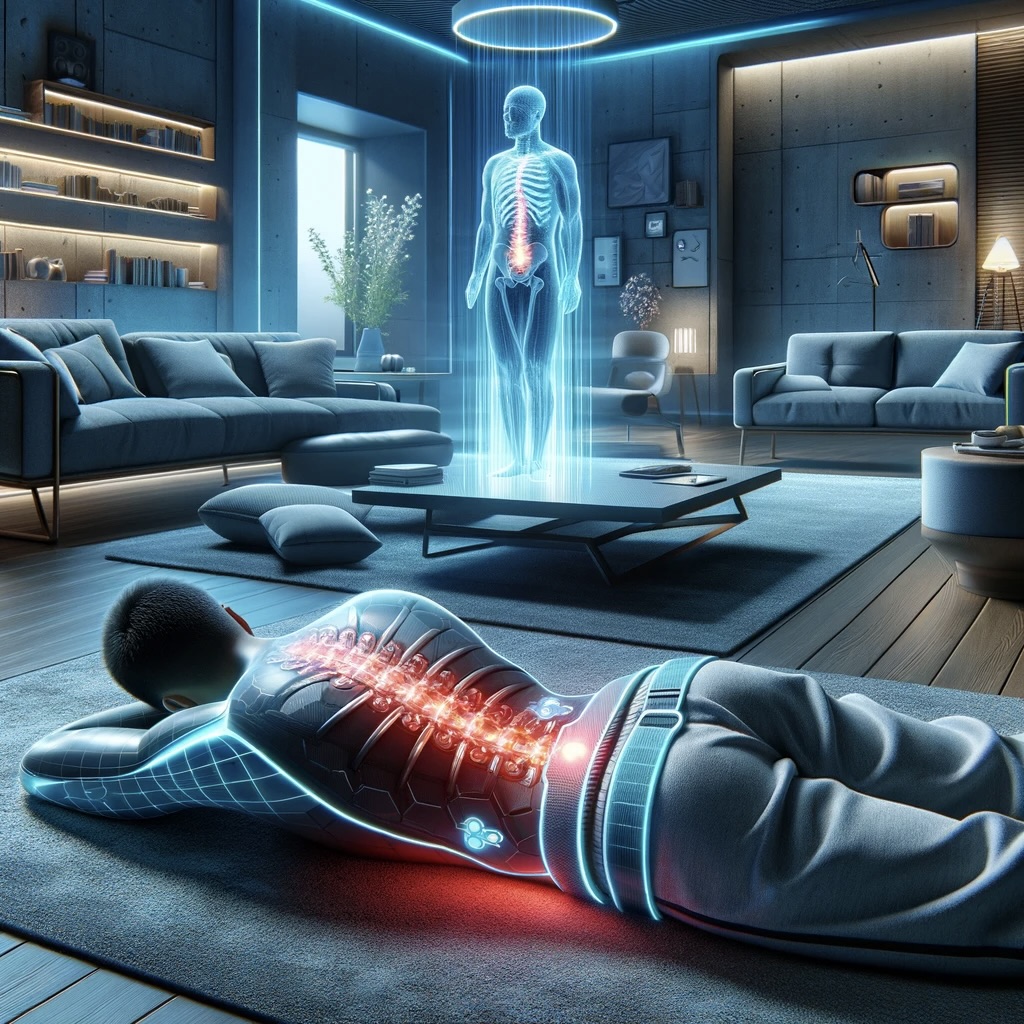

How Does Infrared Light Therapy Work To Relieve Pain?
What Is Infrared Light Therapy?
Definition of Infrared Light Therapy
Infrared light therapy, also known as photobiomodulation or low-level light therapy, involves the use of specific wavelengths of light to promote healing and relieve pain. This non-invasive treatment has gained popularity in recent years for its ability to stimulate cellular functions and provide therapeutic benefits in a range of conditions.
Types of Infrared Light Therapy
There are two main types of infrared light therapy: Near-Infrared (NIR) and Far-Infrared (FIR) therapy. NIR therapy utilizes wavelengths between 700 and 1,200 nanometers, while FIR therapy employs wavelengths between 3,000 and 10,000 nanometers. Both these types of therapy have distinct effects on the body and are used for different purposes.
Benefits of Infrared Light Therapy
Infrared light therapy offers a wide range of benefits for pain relief and overall well-being. Some of the key benefits include improved blood circulation, reduced inflammation and swelling, stimulation of cell repair and regeneration, elevation of mood, modulation of neurotransmitters, and anti-inflammatory effects. By harnessing the power of light, infrared therapy provides a natural and non-pharmaceutical approach to managing pain and promoting healing.
Understanding Infrared Light
Infrared Light Spectrum
The infrared light spectrum is categorized into three main regions: near-infrared, mid-infrared, and far-infrared. Near-infrared has shorter wavelengths and higher energy levels, while far-infrared has longer wavelengths and lower energy levels. This distinction is important because different regions of the spectrum have varying effects on the body.
Penetration and Absorption of Infrared Light
Infrared light has the ability to penetrate the skin and reach deep tissues, including muscles, tendons, and bones. The depth of penetration depends on the wavelength used, with shorter wavelengths having a shallower penetration and longer wavelengths reaching deeper tissues. Once absorbed, infrared light interacts with cellular components to produce therapeutic effects.
Thermal and Non-Thermal Effects of Infrared Light
Infrared light therapy can have both thermal and non-thermal effects on the body. Thermal effects include the generation of heat, which can help relax muscles and increase blood flow. Non-thermal effects involve the activation of cellular processes without a significant increase in temperature. These non-thermal effects play a crucial role in promoting healing, reducing inflammation, and relieving pain.
Mechanism of Pain Relief
Increasing Blood Circulation
One of the primary mechanisms by which infrared light therapy relieves pain is by increasing blood circulation. The light energy promotes the release of nitric oxide, a vasodilator that expands blood vessels and improves blood flow to the affected areas. This increased circulation brings oxygen and nutrients to the tissues, while also aiding in the removal of toxins and waste products.
Reducing Inflammation and Swelling
Infrared light therapy has anti-inflammatory properties that help reduce inflammation and swelling. It stimulates the production of anti-inflammatory cytokines while suppressing pro-inflammatory cytokines. This modulation of cytokines helps to control the body’s inflammatory response, resulting in decreased swelling and discomfort in the affected area.
Stimulating Cell Repair and Regeneration
Another mechanism of pain relief provided by infrared light therapy is the stimulation of cell repair and regeneration. The light energy promotes the production of ATP (adenosine triphosphate), the energy currency of cells. This increased energy production enhances cellular metabolism, allowing injured tissues to heal faster and regenerate more effectively.
Stimulation of Nitric Oxide
Role of Nitric Oxide in the Body
Nitric oxide (NO) is a vital molecule in the body that plays a role in various physiological functions, including the regulation of blood flow, immune response, and cell signaling. In the context of pain relief, nitric oxide acts as a vasodilator, relaxing blood vessels and improving circulation.
Enhancing Nitric Oxide Production
Infrared light therapy stimulates the production of nitric oxide in the body. As the light energy is absorbed by the cells, it triggers the enzymatic release of nitric oxide from intracellular stores. This increase in nitric oxide levels helps to improve blood flow and deliver essential nutrients and oxygen to the affected tissues, promoting healing and reducing pain.
Beneficial Effects of Nitric Oxide on Pain
Nitric oxide has several beneficial effects on pain management. It acts as a natural analgesic by inhibiting pain signals in the nervous system. Additionally, nitric oxide contributes to the reduction of inflammation and swelling, further alleviating pain. By enhancing nitric oxide production, infrared light therapy harnesses the body’s own mechanisms to provide effective pain relief.

This image is property of images.unsplash.com.
Activation of Mitochondria
Mitochondria and Energy Production
Mitochondria are small organelles found within cells that play a crucial role in energy production. They are responsible for the production of ATP, which is essential for cellular functions and processes. By enhancing mitochondrial activity, infrared light therapy improves overall energy metabolism in the body, leading to pain relief and improved healing.
Improving Energy Metabolism
Infrared light stimulates the activity of mitochondria, increasing their efficiency in generating ATP. This improved energy metabolism provides cells with the necessary resources to carry out their functions effectively. By optimizing energy production, infrared light therapy facilitates tissue repair, reduces pain, and promotes faster healing.
Effect on Mitochondrial Membrane Potential
Infrared light therapy also improves the membrane potential of mitochondria. This membrane potential is crucial for maintaining mitochondrial health and functioning. By enhancing the membrane potential, infrared light promotes cellular health and ensures optimal energy production, contributing to pain relief and healing.
Inhibition of Substance P
Substance P and Pain Transmission
Substance P is a neuropeptide involved in the transmission of pain signals in the nervous system. It plays a role in the perception and transmission of pain messages from the site of injury to the brain. In conditions where substance P levels are elevated, pain perception is heightened. Infrared light therapy can help reduce pain by inhibiting the release of substance P.
Blocking Substance P Release
Infrared light therapy has been shown to block the release of substance P from sensory nerve endings. By inhibiting the release of this neuropeptide, infrared light reduces the transmission of pain signals, leading to decreased pain perception. This mechanism provides effective pain relief and can be particularly beneficial in chronic pain conditions.
Reduction in Pain Perception
Inhibiting the release of substance P through infrared light therapy results in a reduction in pain perception. By interrupting the transmission of pain signals, the therapy dampens the intensity of pain experienced by individuals. This reduction in pain perception can have a significant impact on quality of life and overall well-being.

This image is property of images.unsplash.com.
Release of Endorphins
Role of Endorphins in Pain Relief
Endorphins are natural pain-relieving chemicals produced by the body. They are often referred to as the body’s natural opioids, as they bind to specific receptors in the brain to reduce pain signals. Endorphins also have mood-enhancing properties, promoting feelings of relaxation and well-being.
Increase in Endorphin Levels with Infrared Light Therapy
Infrared light therapy triggers the release of endorphins in the body. The light energy stimulates the production and release of these natural painkillers, providing effective pain relief. The increased levels of endorphins also contribute to an elevated mood, promoting a sense of relaxation and reducing the perception of pain.
Elevating Mood and Reducing Pain
The release of endorphins through infrared light therapy has a dual effect of elevating mood and reducing pain. The combination of pain relief and mood enhancement can have a positive impact on an individual’s overall well-being, providing a holistic approach to pain management.
Neurotransmitter Modulation
Impact on Serotonin and Dopamine Levels
Infrared light therapy has been shown to have a positive impact on serotonin and dopamine levels in the brain. Serotonin is a neurotransmitter associated with mood regulation, while dopamine is involved in pleasure and reward. By modulating these neurotransmitters, infrared light therapy helps balance brain chemistry and regulate pain signals.
Balancing Neurotransmitters
Infrared light therapy helps balance neurotransmitters in the brain, creating a more stable and positive mood state. This balancing effect contributes to pain relief by reducing stress and promoting relaxation. Furthermore, the regulation of neurotransmitters can help control the perception of pain signals, providing a more effective approach to pain management.
Regulating Pain Signals
Through the modulation of neurotransmitters, infrared light therapy regulates pain signals in the brain and nervous system. By creating a more balanced neurological environment, the therapy helps to dampen the transmission of pain signals, resulting in reduced pain perception. This regulation of pain signals contributes to the overall effectiveness of infrared light therapy as a pain relief technique.

Anti-inflammatory Effects
Reduction in Pro-inflammatory Cytokines
Inflammation is a common underlying factor in many types of pain. Infrared light therapy has been shown to reduce the production and release of pro-inflammatory cytokines, which are substances that promote inflammation in the body. By targeting these cytokines, infrared light therapy has potent anti-inflammatory effects, leading to a reduction in pain and discomfort.
Suppression of Pain-related Inflammatory Responses
In addition to reducing pro-inflammatory cytokines, infrared light therapy also suppresses pain-related inflammatory responses in the body. It helps modulate the immune system, inhibiting the release of substances that contribute to pain and inflammation. This suppression of inflammatory responses helps alleviate pain and promotes healing.
Lowering Swelling and Discomfort
The anti-inflammatory effects of infrared light therapy result in a decrease in swelling and discomfort. By reducing inflammation, the therapy alleviates pressure on nerves and tissues, leading to decreased pain. The reduction in swelling also promotes improved mobility and range of motion in affected areas, further enhancing the therapeutic effects of infrared light therapy.
Application Methods
Infrared Light Therapy Devices
Infrared light therapy can be administered using various devices, including handheld devices, panels, and full-body devices. These devices emit specific wavelengths of light that target different depths of tissue penetration. The choice of device depends on the specific condition being treated and the desired outcome.
Localized and Whole-Body Treatments
Infrared light therapy can be applied either locally to a specific area of the body or as a whole-body treatment. Localized treatments are typically used for targeted pain relief in a specific region, such as joint pain or muscle strain. Whole-body treatments involve exposure to infrared light over the entire body, providing systemic benefits and promoting overall wellness.
Safety Considerations and Guidelines
While infrared light therapy is generally considered safe, there are certain precautions and guidelines to follow. It is essential to use approved devices and follow the manufacturer’s instructions carefully. Protective eyewear should be worn to shield the eyes from the intense light. Pregnant women, individuals with photosensitivity, and those with certain medical conditions should consult with a healthcare professional before undergoing infrared light therapy.
In conclusion, infrared light therapy offers a comprehensive and natural approach to pain relief and healing. By understanding the mechanisms by which it works, such as increasing blood circulation, reducing inflammation, stimulating nitric oxide production, activating mitochondria, inhibiting substance P, releasing endorphins, modulating neurotransmitters, and providing anti-inflammatory effects, individuals can make informed decisions about incorporating this therapy into their pain management regimen. With the application methods and safety considerations outlined, infrared light therapy can be utilized effectively to improve overall well-being and quality of life.









